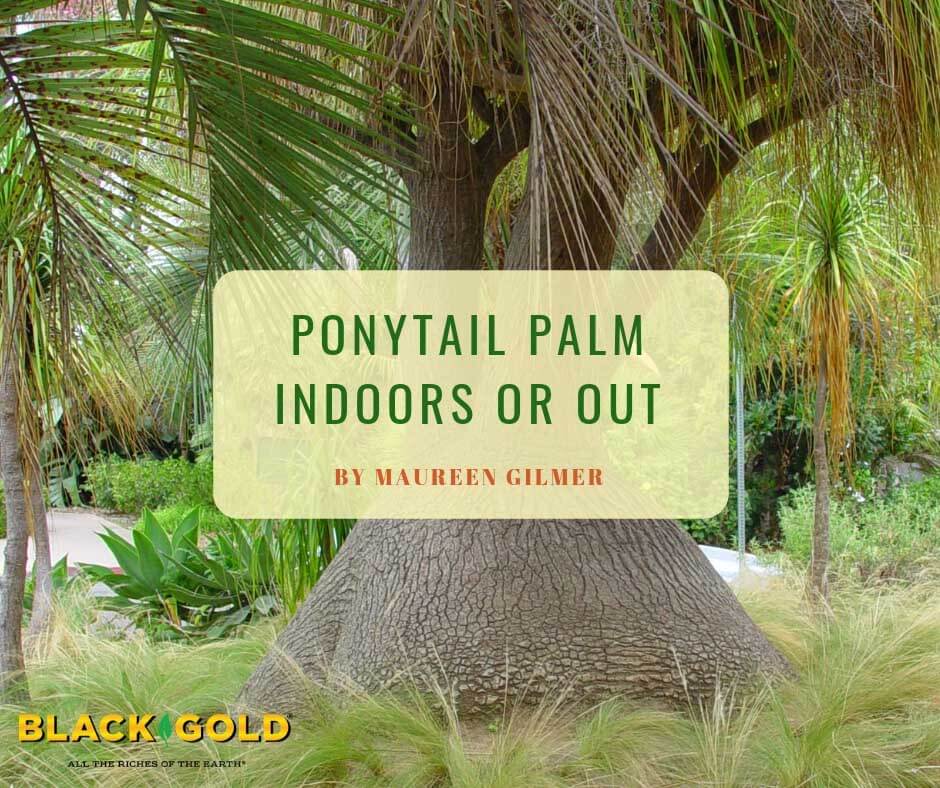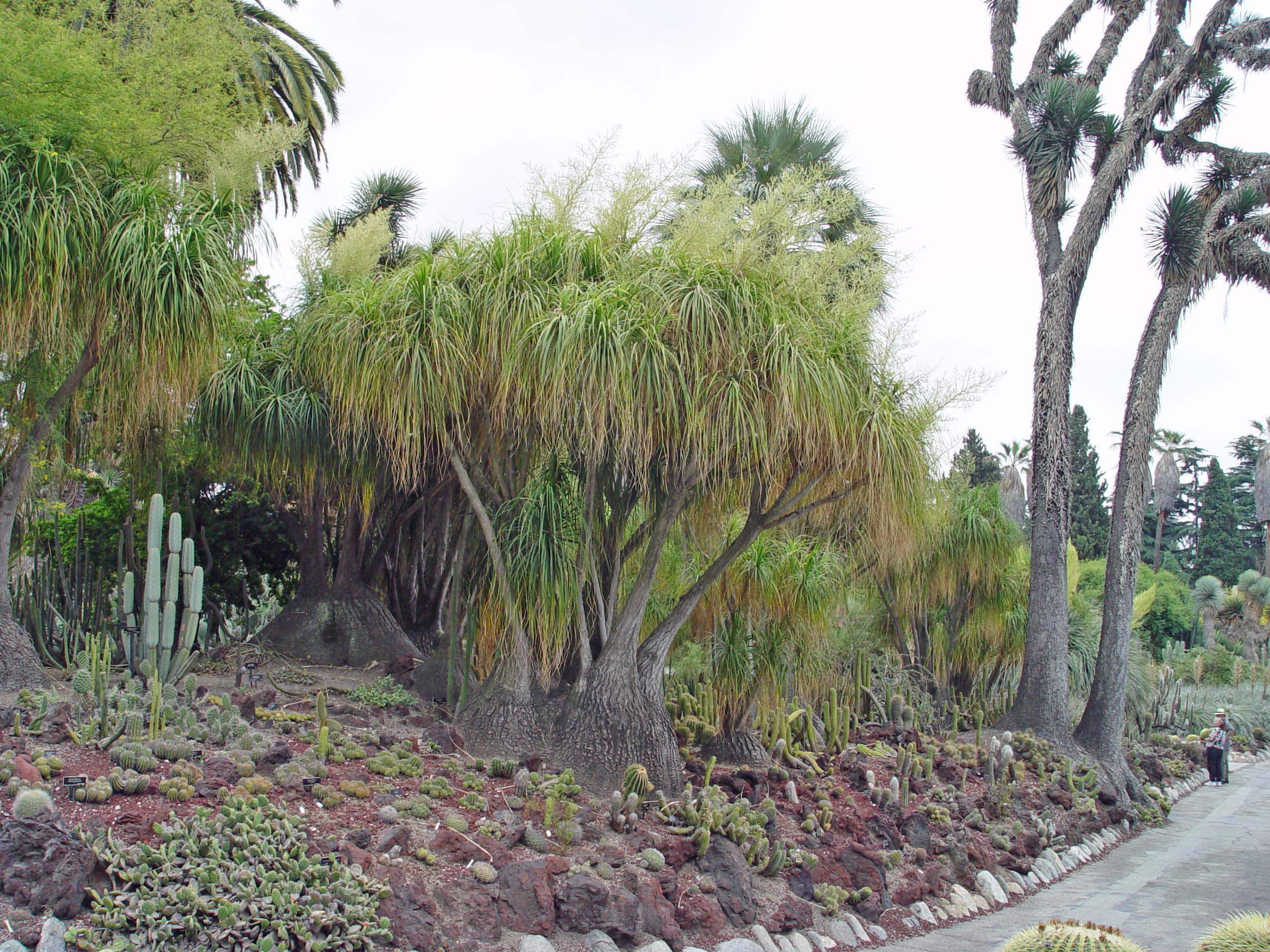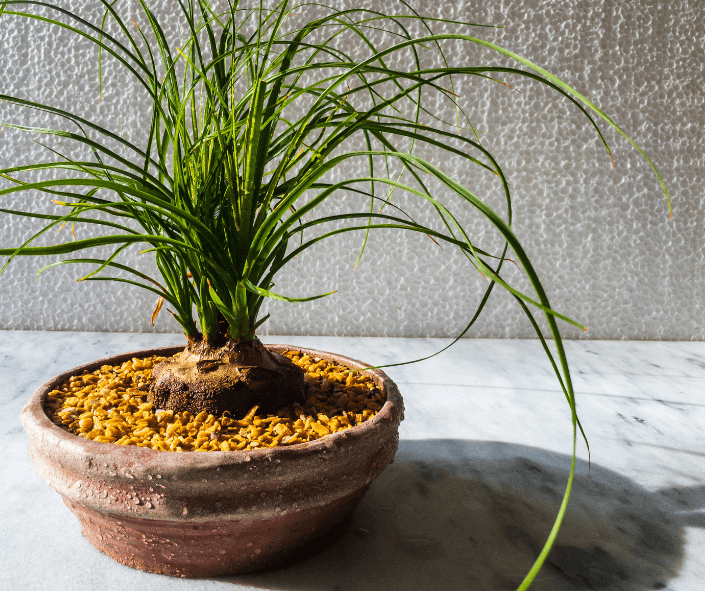
Many believe Dr. Seuss’ Truffula Tree was inspired by a curious cypress in a San Diego park. But maybe this isn’t true at all. Maybe it’s San Diego’s epic ponytail palms that were the real inspiration for the Lorax story. These are botanically known as Beaucarnea (“beautiful flesh” in Latin), a name that refers to the broad, fleshy bases of these succulent trees.
Ponytail Palms for the Landscape
Young, one-gallon, potted ponytail palms (Beaucarnea recurvata, USDA Hardiness Zones 9-11, 4-30 feet) are sold at affordable prices at florists, succulent nurseries, and most other garden centers. A native of Mexico, it is not a true palm but instead more closely related to lilies. It grows slowly and luxuriously, but in time will reach landscape proportions in mild climates where it will become a beautiful and long-lived specimen. Here in Palm Springs, this common house plant is an incredible landscape specimen that can reach 30-feet in height.
Ponytail Palms for the Home

Get the same miniature palm-tree look for your home or apartment with these evergreen “trees” for bright rooms. Its foliage grows longer and longer, just like hair, so ponytail palms become more feminine and elegant looking with time. They can be easily moved outdoors after the last frost in colder climates with little summer rainfall. Or you can place them on a dry, sunny porch where they will be protected from excess rain. Outside in the desert they tolerate intense sun.
Ponytail Palm Growth Habit

The wide base of this plant is a unique structure called a caudex. Its a drought adaptation found in many woody succulents. Inside the semi-woody caudex are succulent cells that take up water quickly and hold it for a long time. The foliage remains luxurious, even with minimal soil moisture.
When fully hydrated, the caudex is smooth and hard to the touch. As it dehydrates, during the depths of the dry season, it looks and feels like an overripe cantaloupe. Subtle depressions appear at the sites of maximum moisture loss. You might see wrinkles show up on the outer skin as the diameter of the drying caudex shrinks. These are all signs that a ponytail palm needs water.
This caudex is its most vulnerable part of the Beaucarnea. Its thin bark protects it from injury and infection, which is the most fatal problem for succulent species. Inside tissue is sterile, much like your own body. If the bark or skin is breached in any way (nicked or punctured), microorganisms are allowed to invade. Often they are carried inside by rain or irrigation water, which creates the perfect conditions for rot to flourish. A tiny wound can take down a huge specimen if it is exposed to excess moisture.
Ponytail Palm Care

For best indoor results, grow these succulents in fast-draining Black Gold Cactus Mix to keep moisture under control. Use only pots with large drainage holes. More succulents are killed by heavily absorptive soils and over-watering than death by dehydration, so when in doubt wait a week and then maybe water. Ponytails need more water during the warm season. In winter, water very sparingly, and when you water avoid wetting the caudex!
With large, old plants caudex injury is a worst-case scenario. Once the caudex is breached, on a plant large or small, and infection takes hold, the only way to try and save it is to carve out all the damaged tissue. It’s a lot like skin cancer surgery where layer after layer is removed until the tissue shows no more discoloration. Then refrain from watering. It will heal with an ugly callused scar upon the beautiful flesh of the trunk, but at least the plant will be saved.
Use this same technique if you get rot spots on young, indoor ponytail palms. Do surgery with a razor-sharp knife, then allow all exposed tissue to dry out in the shade afterward. A dry callus will form to seal it off from infection.
Beaucarnea is one of the most underrated landscape plants for arid zones and house plants for contemporary homes. Affordable, architectural in form, adaptable, and requiring minimal moisture, its design possibilities are endless. Just remember, the ponytail palm is not a palm at all but a beautiful head of long green hair upon a most graceful body.
